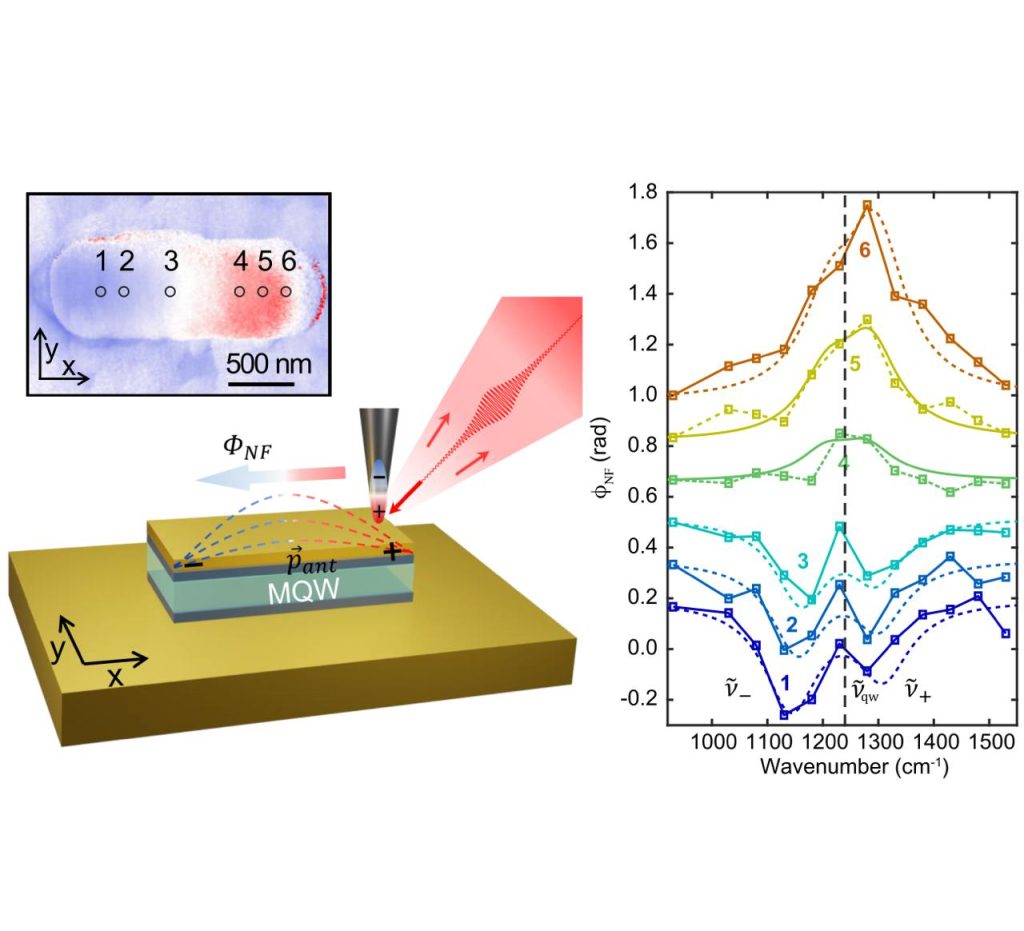Tip-Enhanced Imaging and Control of Infrared Strong Light-Matter Interaction
| REVIEWS AND HIGHLIGHTS | QUANTUM SCIENCE | MOLECULAR AND SOFT-MATTER | ULTRAFAST NANO-OPTICS AND NANOPHOTONICS | MINERALOGY AND GEOCHEMISTRY |
|---|
Yueying Wang, Samuel C. Johnson, Nishant Nookala, John F. Klem, Samuel R. Turner,
Richard L. Puro, Min Hu, Igal Brener, Eric A. Muller, Alexey Belyanin,
Mikhail A. Belkin, and Markus B. Raschke
Laser Photonics Rev. 18, 2301148 (2024).
DOI PDF SI

Optical antenna resonators enable control of light-matter interactions on the
nano-scale via electron–photon hybrid states in strong coupling. Specifically,
mid-infrared (MIR) nano-antennas coupled to saturable intersubband
transitions in multi-quantum-well (MQW) semiconductor heterostructures
allow for the coupling strength to be tuned through antenna resonance and
field intensity. Here, tip-enhanced nano-scale variation of antenna-MQW
coupling across the antenna is demonstrated, with a spatially-dependent
coupling strength gaq varying from 73 (strong coupling) to 24 cm−1 (weak
coupling). This behavior is modeled based on the spatially dependent local
constructive and destructive interference between tip and antenna fields.
Using a quantum-mechanical density-matrix model of the MQW system with
its designed values of transition dipole moment, doping density, and
population decay time, the picosecond IR pulse coupling to intersubband
transitions and the associated tip induced strong-field saturation effects are
described. These results present a new regime of nonlinear IR light-matter
control based on the dynamic manipulation of quantum hybrid states on the
nanoscale and in the infrared, with a perspective regarding extension to
molecular vibrations.
